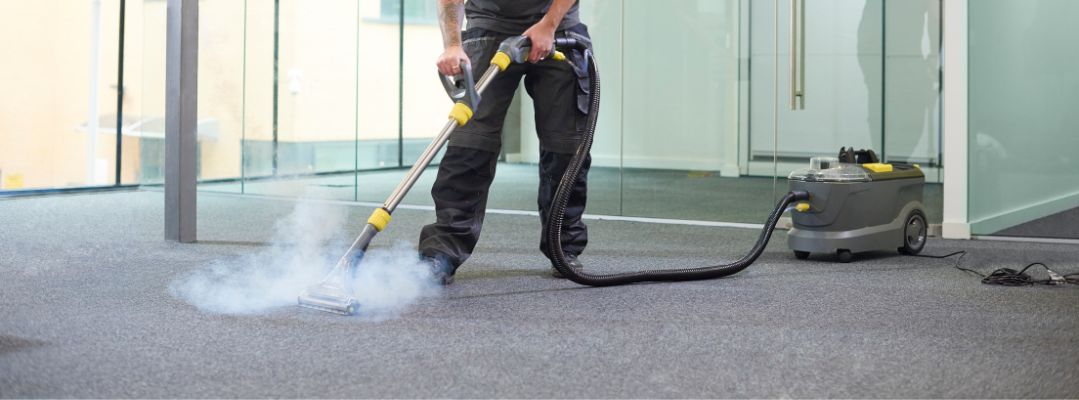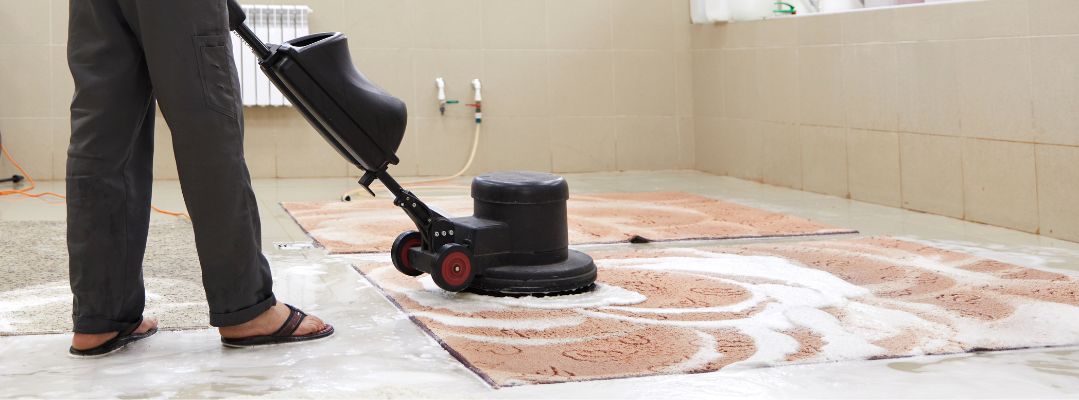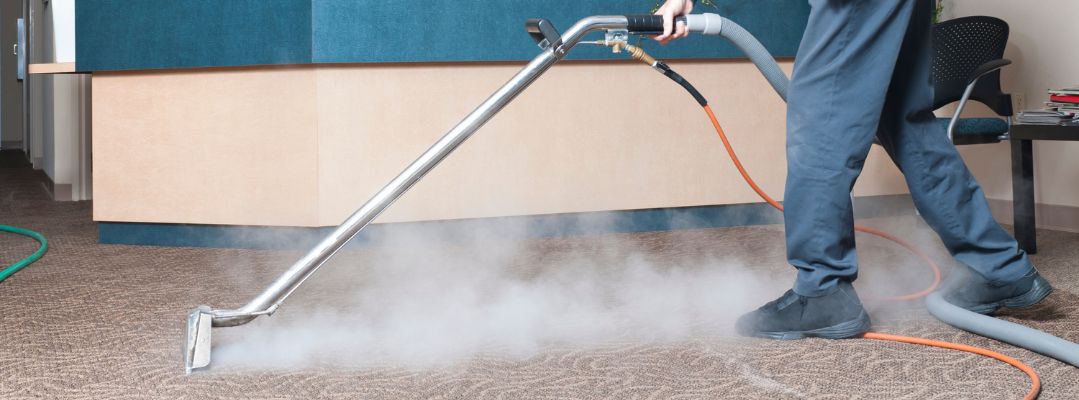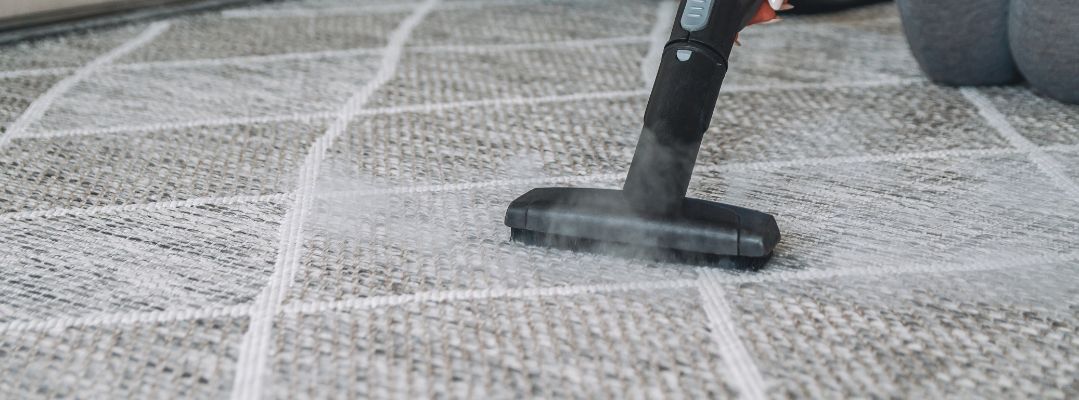
What Is The Difference- Carpet Dry Cleaning vs. Steam Cleaning
If you own a carpet, you’re undoubtedly aware of the importance of keeping it clean. Your carpet serves as a gateway to the rest of your home, and you certainly don’t want your entire living space defined by a dirty or stained carpet. When it comes to carpet cleaning, two of the most commonly used methods are steam cleaning and dry carpet cleaning. Each method has its own unique approach, utilising different techniques and solutions to achieve a clean and fresh carpet.
In this blog, we will delve into the distinctions between these two carpet cleaning methods, exploring their respective advantages and disadvantages. By the end, you’ll have a better understanding of which method is best suited for your specific carpet cleaning needs. Let’s dive in and explore how to improve the cleanliness and longevity of your carpets.
What Is Dry Carpet Cleaning?

Dry carpet cleaning is a carpet cleaning technique that uses a dry cleaning powder or chemical compound instead of liquid water. This powder is applied to the carpet and absorbed into the fibres during the procedure, allowing it to absorb and encapsulate dirt, and then vacuuming it up. This method is known for its quick drying time, suitability for high-traffic areas, and the absence of risks associated with over-wetting. However, it may not provide deep cleaning and can leave behind residue that might damage the carpet fibres over time, making it important to consider the specific cleaning needs of your carpets before choosing this method. Following are some of the benefits and drawbacks of the dry carpet cleaning method.
Benefits
- Ideal for Cleaning High-Traffic Areas: Dry carpet cleaning excels in high-traffic areas because it efficiently targets surface dirt and stains. In these busy parts of your home, dirt tends to accumulate quickly, and the dry cleaning method effectively addresses these superficial issues. It’s a practical choice for maintaining the appearance of your carpet in frequently used spaces.
- Short Drying Time: One of the standout benefits of dry carpet cleaning is its minimal use of moisture. Unlike steam cleaning, which involves saturating the carpet with water, dry cleaning methods use very little liquid. This results in significantly shorter drying times, often on the order of minutes to an hour. Rapid drying is particularly advantageous because it reduces the risk of mould or mildew growth, making it a preferred choice for those who need a quick solution or who live in humid environments.
- Can Be Used to Treat Stubborn Areas: Dry carpet cleaning isn’t just for general maintenance; it’s also a valuable tool for addressing specific stains or heavily soiled spots. The dry cleaning compound or powder can be precisely applied to problem areas and then agitated to break down and absorb the stain. This targeted approach can be highly effective for spot cleaning and maintaining the overall cleanliness of your carpet.
- No Risk of Over-Wetting: Unlike wet cleaning methods, where excess moisture can pose a risk to your carpet’s integrity, dry carpet cleaning is gentle on your carpet. The minimal use of water eliminates the possibility of over-wetting, which can lead to issues like carpet shrinkage, unpleasant odours, or even damage to the carpet pad. By using dry cleaning, you can protect your carpet from common issues caused by excessive moisture.
Drawbacks
- May Not Provide Deep Cleaning: Dry carpet cleaning is primarily designed for surface cleaning. It may not be as effective at removing deeply embedded dirt, allergens, or pet dander as some other methods, like steam cleaning. This means it might not be suitable for carpets in need of a deep, thorough clean.
- Build-Up Residue That Breaks Down Carpet Fibres: Over time, the chemical powder used in dry carpet cleaning can accumulate in the carpet fibres. This residue can become abrasive and gradually break down the carpet’s fibres, potentially reducing its lifespan.
- Limited Stain Removal: While dry carpet cleaning can effectively address some stains, it may not be as successful with certain types of stubborn or deeply set stains. In such cases, other methods, like steam cleaning or professional stain removal, may be more effective.
- Potential Chemical Exposure: Some dry carpet cleaning products may contain chemicals that could be a concern for individuals with chemical sensitivities or allergies. It’s essential to choose products that are safe for your household and pets.
What is Steam Carpet Cleaning?
Steam carpet cleaning, also known as hot water extraction, is a comprehensive method for deep cleaning carpets. It involves the use of hot water mixed with a cleaning solution, which is forcefully injected into the carpet under high pressure. This mixture loosens dirt, stains, and allergens deep within the carpet fibres. After some rest, a strong vacuum removes the pollutants and hot water, leaving the carpet moist but clean. Steam cleaning is highly effective at removing stubborn stains, pet dander, and allergens, making it a popular choice for deep cleaning carpets. However, it’s important to ensure thorough drying to prevent mould growth.

Benefits
- Deep Cleaning: Steam cleaning is highly effective at removing deep-seated dirt, stains, and allergens from carpets and upholstery. The hot water and steam penetrate deep into the fibres, dislodging contaminants that are difficult to reach with other cleaning methods.
- Sanitization: The high temperatures generated by steam cleaning equipment not only clean but also sanitise. Steam can effectively kill bacteria, viruses, and dust mites, making it an excellent choice for households with allergy sufferers or those looking to maintain a hygienic environment.
- Effective Odour Removal: Steam can effectively eliminate odours caused by pet accidents, food spills, or other sources. It not only removes the odour but also the source of the odour by breaking down and removing the particles causing it.
- Does Not Leave Residue: One of the key benefits of steam cleaning is that it doesn’t leave any chemical or sticky residues behind on the cleaned surfaces. Unlike some traditional cleaning methods that may leave a soapy or tacky residue, steam cleaning relies solely on the power of hot water vapour.
- Safe for Allergies and Sensitive Scents: Steam cleaning is an excellent choice for individuals with allergies or sensitivities to scented cleaning products and chemicals. This can be a significant relief for those who are prone to allergic reactions triggered by artificial scents or chemical residues often found in conventional cleaning products.
Drawbacks
- Drying Time: Steam cleaning leaves carpets and upholstery damp, and thorough drying is essential to prevent mould or mildew growth. The drying process can take several hours, making it less convenient for areas that need quick access.
- Not Suitable for All Materials: Steam cleaning may not be suitable for delicate materials, such as silk or some types of upholstery, as the high heat and moisture could cause damage. It’s essential to check manufacturer recommendations before using steam cleaning on specific items.
- Risk of Over-Wetting: If not used correctly, steam cleaning can lead to over-wetting, potentially causing damage to carpets or flooring materials and promoting mould growth. Proper training and equipment operation are crucial to avoiding this issue.
- Cost: Professional steam cleaning services can be relatively costly, particularly when compared to other carpet cleaning methods. The investment in equipment for home use can also be substantial.
Choosing Dry or Steam Carpet Cleaning: Important Considerations
- Types of Carpet
The material and construction of your carpet are paramount in the decision-making process. Dry carpet cleaning, which uses minimal moisture, is generally preferred for carpets made of natural fibres like wool or delicate materials that could shrink or get damaged when exposed to excessive moisture. It’s also suitable for certain rugs or antique carpets. Conversely, steam cleaning, which involves injecting hot water and steam, is effective for most synthetic carpets and deep-pile carpets, as it can penetrate and lift dirt from deep within the fibres.
- Cost of Cleaning
Your budget is a significant consideration. Dry carpet cleaning often involves higher upfront costs due to specialised equipment and cleaning agents. However, steam cleaning might incur additional expenses if you need to rent or hire professional-grade equipment. In the long run, steam cleaning is generally more cost-effective for deep cleaning tasks, whereas dry cleaning methods may be preferable for regular maintenance.
- Impact on the Environment
If environmental sustainability is important to you, dry carpet cleaning may be a more eco-friendly option. It typically uses fewer chemicals and less water, reducing the risk of chemical runoff and conserving water resources. Steam cleaning, while effective and safe, uses more water and may generate wastewater that needs proper disposal. Consider your environmental values and the local regulations regarding water usage and chemical disposal.
- Drying Time
Drying time is a practical factor to ponder. Dry carpet cleaning has a clear advantage here, as it involves minimal moisture and results in much shorter drying times. This can be especially crucial in busy households or commercial spaces where you can’t afford to keep areas out of use for extended periods. Steam cleaning, conversely, can leave carpets damp, requiring several hours or more to dry completely. Keep in mind your specific needs and how soon you need the cleaned area back in use.
- Cleaning Requirements
Assess the extent of your cleaning needs. If you’re dealing with challenging issues such as deep-set stains, allergens, or pet odours, steam cleaning is often the go-to choice due to its ability to thoroughly penetrate and clean deep into carpet fibres. On the other hand, for routine maintenance, quick touch-ups, or spot cleaning, dry methods can be efficient and effective. Consider the nature of the cleaning task at hand and whether it calls for a deep, thorough clean or lighter maintenance.

Dry Cleaning vs. Steam Cleaning- Which One To Choose
Choosing between dry cleaning and steam cleaning for your carpets depends on your specific cleaning needs and priorities. Both methods have their advantages and limitations, making it essential to consider what aligns best with your circumstances. Dry cleaning is distinguished by its minimal moisture usage, allowing for immediate use of your carpets and typically drying within a short period of time. This rapid drying time is ideal for high-traffic areas or situations where minimal downtime is crucial. Dry cleaning is also gentle on delicate carpets, reducing the risk of damage or shrinkage. It’s efficient for routine maintenance, preserving carpet freshness between deeper cleans, and is more environmentally friendly, using fewer chemicals and conserving water.
Steam cleaning, on the other hand, is the best method for deep cleaning and stain removal. It effectively eliminates buried dirt, tough stains, and allergies, reviving extremely soiled or stained carpets. Steam cleaning is useful for homes trying to maintain a sanitary living environment because it sanitises carpets by getting rid of bacteria, viruses, and dust mites. While it may involve higher upfront costs, steam cleaning proves cost-effective for deep cleaning tasks due to its thoroughness. Ultimately, your decision should align with your specific carpet needs, drying time preferences, and environmental considerations. Both methods can be effective, but the choice depends on what best suits your unique situation.
Conclusion
The difference between carpet dry cleaning and steam cleaning lies mainly in the amount of moisture used and the depth of cleaning. Dry cleaning minimises moisture, offers a quick drying time, and makes it ideal for maintaining carpets in high-traffic areas and for delicate carpet types. Steam cleaning, or hot water extraction, is renowned for its deep cleaning capabilities, is effective in removing tough stains, and provides deep sanitization. The choice between these methods should depend on your specific needs, the type of carpet you have, and your preferences regarding drying time and environmental concerns.
If you are looking for effective carpet cleaning services, look no further than Harry The Cleaner. Our professional team is well-equipped to assess your carpet’s unique requirements and provide the most suitable cleaning method. Whether you opt for dry cleaning or steam cleaning, we ensure a thorough and efficient cleaning process, leaving your carpets refreshed, sanitised, and looking their best.
